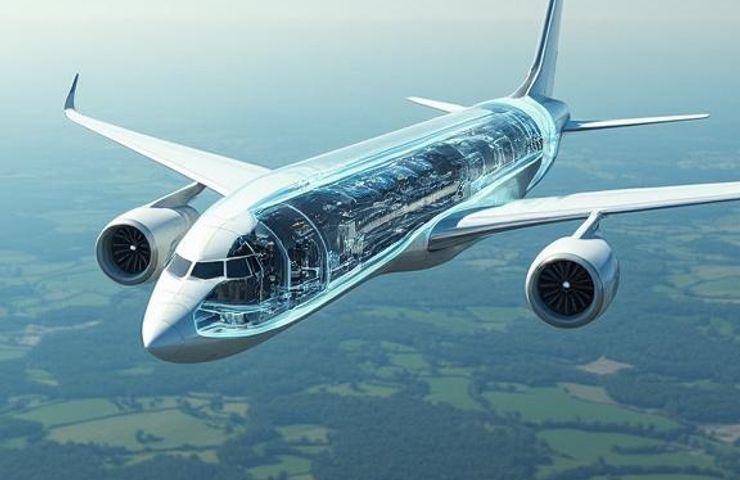
Hydrogen Storage Advances: SHZ and JetZero’s Zero-Emission Blended Wing-Body Aircraft
August 21, 2025Zero-Emission Ambitions Take Wing
Picture this: you step onto a plane that only exhales water vapor. Feels like sci-fi, right? But on August 20, 2025, SHZ Advanced Technologies and JetZero showed us it’s very real. Under a NASA research program, the French innovators and the California blended wing-body experts are wiring in next-gen liquid hydrogen tanks straight into JetZero’s Z4 airframe. It’s not just hype – it’s a bold leap toward zero-emission technology in sustainable aviation with game-changing hydrogen storage.
Core Partnership and Goals
Think of it as peanut butter meeting jelly: SHZ’s cryogenic storage wizardry – fueled by co-founder Eric Schulz’s decades at Rolls-Royce and Airbus – teams up with JetZero’s aerodynamic know-how. They’ve sketched out a two-step playbook: first, a Z4 tweak with conventional turbofans, then the all-in hydrogen-propulsion version. Flight tests kick off in 2027, with United Airlines already penciling in purchase options and Delta lending a hand through its Sustainable Skies Lab. And with NASA on board, research dollars flow and those all-important FAA certifications for hydrogen systems get their first green light.
Technical Dive: Hydrogen Storage Meets BWB Design
Here’s where it gets really cool: storing liquid hydrogen at a bone-chilling -253 °C right inside the Z4’s lifting-body cavity. Forget plain old metal bottles; SHZ’s tanks curve to match the blended wing-body shape, slashing weight and squeezing in more fuel. They’re wrapped in vacuum insulation, layered reflective foils and tough composite shells – so boil-off barely nudges 0.2 % a day. From there, hydrogen zips through vacuum-jacketed lines to engines reworked for H₂ or to prototype fuel cells. Thanks to the BWB’s natural lift distribution, JetZero and its airline backers reckon they’ll chop fuel burn and carbon emissions by half compared to your typical tube-and-wing jet.
Strategic Impact: Jobs, Infrastructure, and Competition
Sure, R&D steals the spotlight, but this partnership is also a local economy heavyweight. JetZero’s $4.7 billion manufacturing hub in Greensboro, North Carolina – the state’s biggest aerospace bet ever – is lined up to deliver as many as 14,500 jobs over the next decade. Think buzzing assembly lines, cutting-edge systems integration labs and a dedicated hydrogen integration center, all kick-starting regional cryogenics and composite supply chains. Meanwhile, the old guard is on notice: Airbus hit pause on its hydrogen airliner program in early 2025 over infrastructure headaches, and Boeing’s still doodling on BWB concepts with NASA’s X-48 demonstrator but hasn’t green-lit a production model.
Business and Policy Dynamics
Airlines are under the gun to hit net-zero by 2050, and hydrogen-powered fleets look like a linchpin in that quest. That means green H₂ from electrolysis needs a serious volume boost by 2035 to keep planes flying. United and Delta have already thrown down some big checks, and NASA research grants underline the public-sector buzz. But here’s the kicker: green hydrogen still runs three to five times pricier than jet fuel on an energy basis. Plus, airports will need to roll out cryo-refueling stations and overhaul safety protocols before hydrogen jets become more than just prototypes.
Historical Context of BWB and Hydrogen Flight
Blended wing-body designs go way back to mid-20th-century military R&D – think the U.S. B-2 stealth bomber and NASA’s X-48 experiments. Jump to the 2010s and climate mandates rekindled commercial curiosity, with Airbus spearheading hydrogen-airliner dreams until an early-2025 pause. Through every twist and turn, NASA has been the steady sponsor of sustainable aviation research, now fueling the SHZ–JetZero collaboration as part of a renewed federal push to decarbonize the skies.
Challenges on the Runway
Let’s be real: even if the prototype shines, scaling up hydrogen logistics is a beast. Airports will have to spring for giant cryogenic tanks and electrolyzers, set up secure pipelines or tanker routes, and drill ground crews on fresh handling drills. Public buy-in matters too – surveys show travelers are getting on board, but one headline-grabbing safety hiccup could throw the brakes on the timeline.
Looking Ahead: From Prototype to Commercial Service
If they tick all the boxes, expect the first hydrogen-ready BWB jets to hit the skies by decade’s end – potentially a watershed moment for sustainable aviation. Next up: locking in steady green hydrogen supplies, getting cryogenic tanks certified for rigorous freeze-thaw cycles, and nailing down FAA and EASA approval for hydrogen propellant systems. On the tech side, those tanks need to hold up flight after flight, and the hydrogen feed has to mesh seamlessly with cabin power and environmental controls. Sure, liquid hydrogen storage is a key piece, but advances in fuel cells, hydrogen turbines and leak detection are just as critical. If everything comes together, we could see operating costs plunge, airports overhaul their infrastructure, and the air truly go zero-emission technology.
The Catalyst’s Take: We’re basically in the front row of an aerospace revolution. SHZ and JetZero aren’t just shipping in radical airframe concepts – they’re coupling them with cutting-edge hydrogen storage solutions to tackle two of the toughest challenges in flight. The million-dollar question is: will the industry step up with the infrastructure and policy muscle to make this vision a reality?



 With over 15 years of reporting hydrogen news, we are your premier source for the latest updates and insights in hydrogen and renewable energy.
With over 15 years of reporting hydrogen news, we are your premier source for the latest updates and insights in hydrogen and renewable energy.